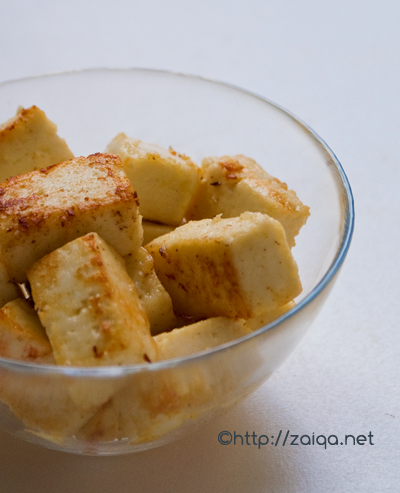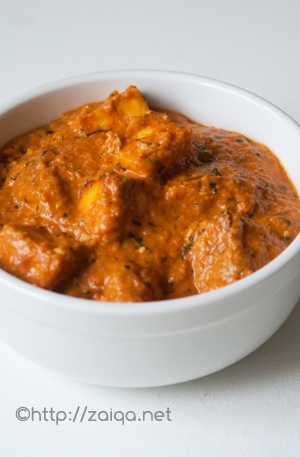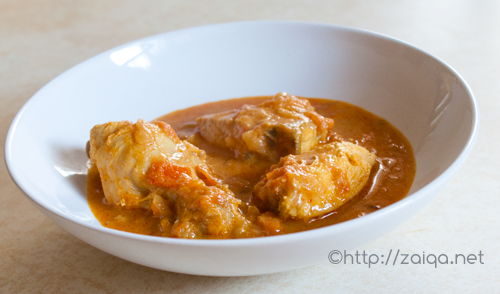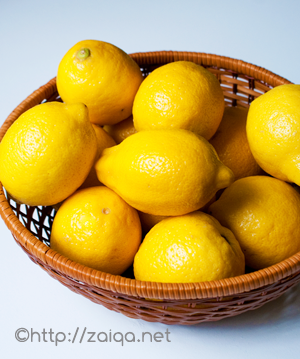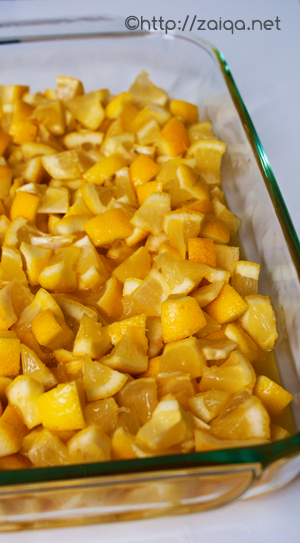Baghara Khana (or Baghara Chawal), is an another simple and nourishing dish that reminds me of that happier era, when I was a kid. Food that reminds me of my childhood and my hometown definitely makes me immensely nostalgic every time.
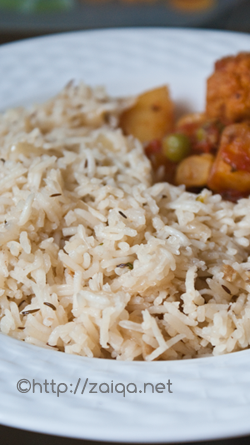
Baghara Khana along with Aloo Gobi Matar ~ was my yesterday’s lunch
Fragrant long grained basmati rice is cooked along with caramelized onion and exotic whole spices that give a delicate flavor and a wonderful aroma that will fill your house, and welcome your loved ones with open arms and a sense of home where warmth and comfort abounds. Always serve Baghara khana warm, along with the accompaniments of your choice.
To prepare Baghara Khana, use rice and water in the ratio of 1:2, i.e., for 1 cup rice, use two cups of water. Save a little amount of the water to add later on after the rice is about 3/4th cooked as described below.
Baghara Chawal/Khana
Serves: 2
Ingredients:
Long grained White Basmati Rice – 1 cup (I prefer the brands ‘Daawat’ or ‘India Gate’ or ‘Lal Qila’)
Canola Oil – 1 tsp
Ghee – 2 tsp
Onion – 1, small, finely sliced
Ginger-garlic paste – 1 tsp
Fresh Cilantro/Kothmir – 1 tbsp, finely chopped
Fresh Mint/Pudina – 1 tbsp, finely chopped
Green cardamom/Elaichi – 2
Cinnamon/Dalchini – 2 inch stick
Dry bay leaf – 1, medium sized
Caraway seeds/Shahzeera – 1/2 tsp
Water – 2 cups
Salt – 1 tsp
Method:
1. Wash the rice in two changes of water and soak it in surplus cool water for 30 minutes.
2. In a saucepan at medium high heat, pour oil and ghee and as soon as it warms up, add the sliced onion and stir fry until the onion is nicely browned up. Add the ginger-garlic paste and fry it along for a minute. Add the chopped herbs, green cardamom, bay leaf, cinnamon stick and caraway seeds. Fry them for a minute more. Add 1 2/3 cup of water and salt. Cover with a lid and increase the heat to high. Let it come to a boil.
3. Meanwhile drain the soaked rice and keep ready.
4. Add the drained rice to the boiling water in saucepan and mix well. Let it come to a boil once. Lower the heat to simmer and cover with a lid. After 3 minutes using a spoon, mix the rice well, lower the heat to minimum and and cover it back again and let cook for a furthur 3 minutes. Open the lid, pour in the remaining 1/3 cup water and gently mix well. Cover and let cook until the rice is tender. Close the heat and leave the saucepan on the hot stove for about 15 more minutes to finish cooking on Dum. Serve warm.
My house smells like a potpourri every time after I prepare Baghare Chawal due to all those aromatic spices.
Note: You can also add chopped green chillies and a few whole cloves along with the other spices while frying the onions. I do not prefer to add them. Also for a special touch, garnish the cooked rice while serving with a few toasted whole cashew nuts.
Suggested Accompaniments: Baghara khana is enjoyed along with Dalcha or Baghare baingan or Mirchi ka Salan or Sem ki phalli gosht or Qimah or Qorma for a delicious Hyderabadi meal.
***
This Summer, I had planted a few tomato seeds (first time with tomatoes) and voila, I had plenty of fresh tomatoes from my lil tomato garden in the backyard. Here are a few snaps:
Tomato Variety: Moneymaker
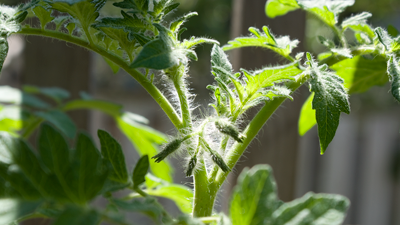
tomato budss under the warm early spring sunshine
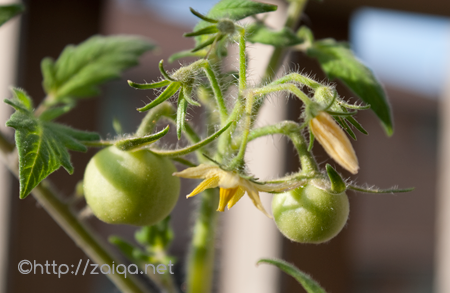
tiny tomatoes and blooms in early summer
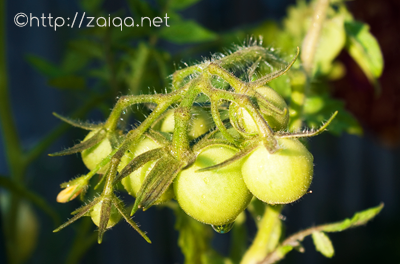
after a shower
I love the fuzzy stems and the unique strong scent of tomato foliage
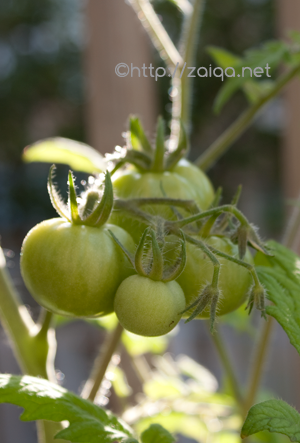
on a warm sunny evening
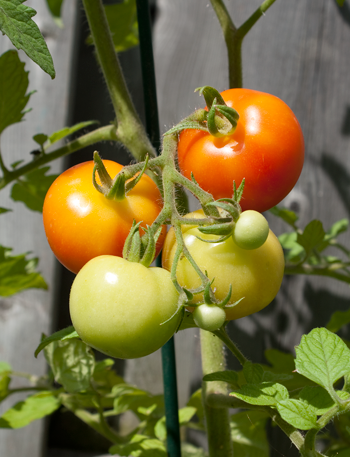
ripening on the vine
For the curry below I had used the garden ripe tomatoes from my plants. With the commenced autumn chill in the air, I do not think the plants will live much longer. To freeze tomatoes, just cut out the tough part of the core, put the whole tomatoes on a baking sheet and into the freezer. After they’ve frozen, transfer them to a plastic zipper bag and put them back into the freezer. When you want to use them, you can easily peel them if you allow them to thaw until they’re just barely soft on the outside. Then just rub off the skins. Or you can run warm tap water over them and peel them immediately. Use them in recipes for any cooked dish. Inshallah the next season, I plan/wish to grow the heirloom ribbed or beefsteak tomatoes and even more veggies. Have a look at the beautiful heirloom tomatoes here, I am sure even you all will be smitten by their beauty. Need to stock up the seeds soon for the gardening season.
For those of you interested, this book has loads of information on heirloom tomatoes and how to plant them.
Aloo Gobi Matar – Potato Cauliflower and Peas in one pot
Ingredients:
Canola Oil – 1 1/2 tbsp
Onion – 1, large, finely sliced
Cumin seeds – 1 tsp
Fresh Curry leaves – 6
Dry red chillies – 3, each broken into two
Salt – 2 tsp
Turmeric powder – 1/4 tsp
Cauliflower – 1 medium head, cut into florets, washed and drained
White Potatoes – 3, peeled and cut into quarters
Tomatoes – 2, medium sized, chopped
Red chilli powder – 2 tsp
Frozen organic peas/Matar – 3/4 cup
Fresh Cilantro – 2 tbsp, finely chopped
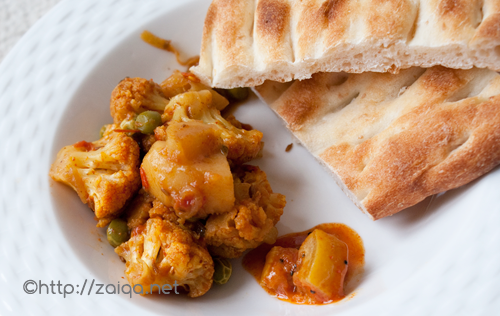
Aloo Gobi Matar along with toasted Afghani Roti, and home-made Lemon pickle ~ todays lunch
Method:
Heat oil in a wide saucepan at medium high heat and as soon as it is warm, pour in oil. Add the sliced onion and stir fry until the onion are just lightly browned. Add the baghaar ingredients~cumin seeds, curry leaves and dry red chillies. Also add salt and turmeric powder. Mix well. Add the cauliflower florets and potato quarters and mix well. Spread the vegetables so that they are in a single layer in the pan. Sear the vegetables for about two minutes. Keep stirring them occasionally. Add the chopped tomatoes, half cup of warm water and red chilli powder. Mix well and cover the lid. Let cook until the vegetables are tender and have absorbed most of the liquid. Keep stirring occasionally. Add the frozen peas and cover the lid for 2 minutes. Garnish with chopped cilantro and serve warm.
‘Aloo Gobi Matar – Potato, Cauliflower and Peas’ in one pot goes to Andera’s Grow Your Own event.
Luv,
Mona
